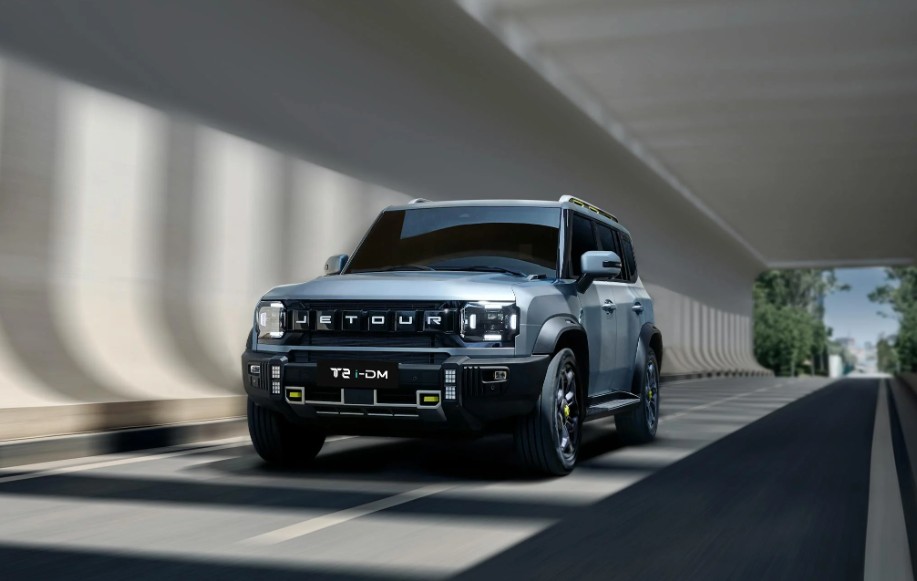What’s the Main Benefit of Driving a Four-Wheel-Drive Vehicle?
Four-wheel drive (4WD) is a four-wheel drivetrain system where power is delivered to all four wheels simultaneously, providing greater traction and stability on slippery or bumpy road surfaces.
As far as conventional two-wheel-drive (2WD) vehicles are concerned, 4WD directs power to all four wheels, providing better traction when driving snow, mud, sand, or rocks. 4WD provides better control for the driver on hills and rutted terrain since the power is shared evenly to all the wheels.
Most contemporary vehicles also feature 4WD along with traction and high-stability technologies to provide ease of travel through conditions in a safe manner.
Four-Wheel-Drive Systems Types
The primary 4WD systems are part-time, full-time, automatic, and hybrid, with more traction, torque split, stability, and off-road capabilities.
Part-Time 4WD
Drivers manually shift from 2WD to 4WD for off-road or slippery road traction and to conserve fuel on regular roads. The system is dedicated to off-road and slippery road use.
It operates by allowing the driver to manually shift between 2WD and 4WD. It has as benefits improved traction, improved fuel efficiency, and less maintenance. Common use is on dirt tracks, farms, and rural or rugged land.
Full-Time 4WD
Continuous power is sent to all four wheels for extra stability, traction, and control on any weather, road, and off-road conditions. Full-time 4WD is particularly strong with all-surface and all-weather stability.
It does this by constantly driving all the wheels via a center differential. The benefits are constant traction, improved handling, and safer operation on slippery or wet surfaces. It is normally employed on rain, snow, or mountain conditions and big trucks or SUVs.
Automatic 4WD
Tends to run primarily in 2WD but automatically engages rear wheels as soon as they begin to slip, providing adaptive traction and economy with no intervention.
Automatic 4WD is designed for adaptive traction use in crossover. It can sense wheel slip and will automatically engage rear wheels.
Advantages are fuel economy in usage, minimal drivetrain wear, and smooth traction. Ideal use is for city or suburban owners who receive a sporadic snow, rain, or muddy road, usually on crossovers.
Hybrid 4WD
Blends traditional 4WD with electric motors to provide torque distribution, traction, and fuel economy for eco-friendly off-road performance.

Hybrid 4WD excels in green performance and extreme torque control. It does this by utilizing electric motors to enhance traditional 4WD for superior-class torque.
Strengths are efficiency, smooth ride, and cutting-edge technology features. Markets are high-end SUVs, plug-in hybrids, and technology-based off-road vehicles.
The selection of the proper system is motivated by driving habits, weather, and road conditions. A snow-driver will use auto or full-time 4WD most frequently, while trail-running recreator will use part-time 4WD in order to conserve gasoline.
What Is the Greatest Advantage of Having a Four-Wheel-Drive Car?
The main advantage of driving a four-wheel-drive car is more traction, off-road driving, road traction in slick conditions, and improved handling in unfavorable conditions.
The added traction allows individuals to travel in snow, mud, ice, sand, and bad roads without endangering their lives. It also makes driving with tight turns simple, eradicates the possibility of being stuck, and provides security in the event of an accident.
Whether climbing steep hills, pulling heavy loads, or driving on rain-glistening roads, a 4WD car powers all four wheels and distributes torque to each wheel compared to the other so that wheelspin will not occur.
Increased Traction
The greatest advantage of a four-wheel-drive (4WD) vehicle is the increased traction. By delivering power to the four wheels, it will stop wheels from spinning on slippery surfaces like wet pavement, ice, snow, or muddy trails.
The drivers feel more secure and safe, even under difficult driving conditions.
Off-Road Capability
4WD cars truly shine off road. Take bumpy trails, sandy dunes, or rocky terrain – the system allows the car to maintain traction where ordinary two-wheel-drive cars would lose traction.
It opens up adventure that might otherwise be inaccessible, so it’s a hit with outdoor types.

Stability on Slippery Roads
Smooth surfaces such as wet roads or patches of ice are slippery. A 4WD vehicle sends an equal amount of torque to all four wheels, thereby it is less likely to skid and lose control.
This stability profile proves useful when performing a sudden turn or an emergency maneuver, making you and your passengers more secure on the road.
Better Handling in Adverse Weather
Hard weather or hard-load driving will stress a vehicle’s handling. The even power to all wheels provided by a 4WD system introduces stability and eliminates the possibility of getting stuck.
Stability and consistency of handling are improved when towing a trailer, driving up hills, or cornering through tight areas.
Improved Handling when Towing and When Heavy Loaded
For people who need to tow caravans, boats, or trailers, 4WD is a definite advantage. Even load distribution and greater traction lead to better towing stability when loaded up, a more efficient and safer towing experience.
It minimizes wheel spin and maintains the vehicle’s onward momentum on rises or slippery terrain.
Confidence and Peace of Mind
Ultimately, the greatest advantage of a 4WD vehicle is the peace of mind it instills. Having the assurance that your vehicle can navigate bad weather, off-road conditions, or emergency situations provides an unmatched sense of security on any trip.
You are less likely to become stuck, slide out of control, or lose traction, making day-to-day driving and adventure excursions both safer and more enjoyable.
Drawbacks of 4WD vehicles
4WD consumes more fuel, is costly to maintain, weighs more, performs badly on the road, and is costly to fix, hence being less efficient.
Higher fuel consumption
4WD sends power to all wheels, and it also has extra weight and increased engine load, hence consuming more fuel than 2WD cars.
Steep repair costs
All those extra drivetrain parts, including transfer cases and differentials, cost money to repair, and that means a lot of money in the long run.
Greater weight
4WD trucks tend to be heavier than their 2WD siblings, and that can slow down acceleration, foul up the brakes, and encourage tire and suspension wear.
Less responsive on the road
While 4WD is great in the bush, it is less responsive on bitumen roads with heavier steering and worse cornering response than light vehicles.
Expensive repairs
Once drivetrain parts wear out, the repair will be longer and more expensive because of the additional components and professional time required.
Total efficiency compromise
While 4WD is best on bad roads and adverse weather, urban commuting every day is less efficient and more expensive to operate.
FAQs
Does 4WD make winter driving better?
Yes, 4WD provides maximum tire traction on snow or ice, inhibits wheel spin, and enhances stability, and that means safer winter roads.
Can a 4WD travel on highways?
Yes, but turn off part-time 4WD on dry roads to minimize drivetrain wear and save fuel with normal handling maintained.
Is 4WD more costly than 2WD?
In general, 4WD vehicles cost more to purchase because they have more sophisticated drivetrain systems and may be more expensive to repair in the long run.
Does 4WD assist with towing?
Yes, empowering every wheel is equal to greater traction and stability, towing boats and trailers with greater ease and safety.
Can 4WD make me safer?
Yes, 4WD minimizes skidding, enhances vehicle control, and provides traction on slippery or irregular road surfaces.
What 4WD is best to drive daily?
Full-time or automatic 4WD is best to drive on a daily basis because it responds to road conditions and optimizes traction automatically without driver input.







